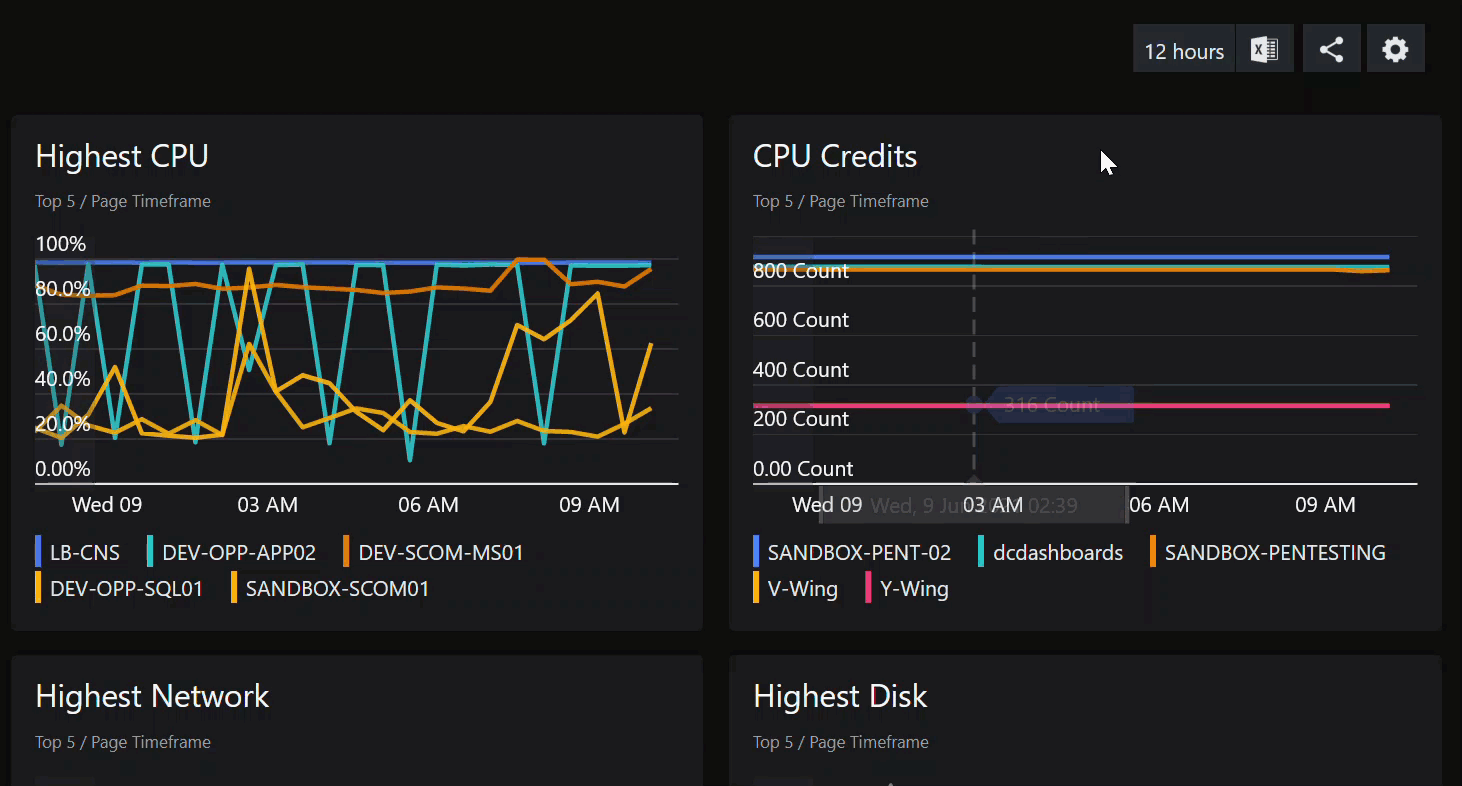SQL Page Timeframe
This article describes how to download a specific dashboard pack. You can download dashboard packs from dashboards.squaredup.com and learn more about how dashboard packs work here: Dashboard Packs
Description
Sometimes, the hardest thing to deal with when designing a dashboard are date and time fields. When writing a SQL query, getting the date and time to format correctly can be a real pain. What is the current date and time, and how is it formatted? What happens if I want the date and time from 30 days ago? This SQL Page Timeframe dashboard demonstrates how the current date and time are displayed. Each tile on the dashboard does something different with the Date and Time, including an example how the page timeframe in SquaredUp DS impacts the date and time in a SQL query.
The page timeframe is the timeframe setting a dashboard or perspective is currently using. These timeframes are all relative to the current time, for example 7 days ago until now. When a user changes the page timeframe, all tiles that have use page timeframe set will adapt to the new timeframe. (Tiles that do not have use page timeframe set (i.e. are set to specific timeframe or custom timeframe) are not affected and won't change.)

How do I import and configure this dashboard?
Ensure you're using SquaredUp DS v5.4 or above.
Already a SquaredUp customer?
Get the latest version of SquaredUp DS for Azure
New to SquaredUp?
Download and import this dashboard pack.
- Download the dashboard pack zip file for the dashboard pack you wish to import.
There may be additional steps before or after the import to get the dashboard working in your environment.
- In DS for Azure go to the top right hand menu ☰ > Import Dashboard Packs and drag the zip file into the Manual Import box.

- The dashboard pack is imported and if the pack contains top-level dashboards, these will automatically appear in the navigation bar, usually in a folder called 'Community Dashboards' for dashboard packs from the SquaredUp Community.
- Carry out any additional steps required to make the dashboard work in your environment. These steps will be described on the download page for each dashboard. For example, you may need to create the correctly named Web API provider, create a PowerShell profile, or edit tile scopes.
- Edit the imported dashboard as required.
- Download the dashboard pack zip file for the dashboard pack you wish to import.
- Replace the connection string in each of the seven SQL tiles with the connection string to your own OperationsManagerDW database.
Note: This dashboard requires a connection to SQL Server, but any database can be used. To make things simpler, the Master database was chosen, but the target database can be changed as needed.- Edit the tiles by clicking the Edit button.
- Open the connection panel.
Enter the connection string to your own OperationsManagerDW database, for exampleData Source=fqdn.site.domain.com;Initial Catalog=OperationsManagerDW;Integrated Security=True
Publish the dashboard.
A newly created dashboard will not be visible to others until it is published.
If you made changes to an existing dashboard, the changes will only be visible to others after you published the dashboard again.
You can identify a dashboard that has not been published yet or has unpublished changes by the unpublished button at the top:

When you click on the unpublished button, you'll have two options:
- Publish will make the dashboard or changes visible to others.
Note: A newly created dashboard will appear on the menu where you created it. To move the dashboard to a different place on the navigation bar see How to edit the Navigation Bar. - Discard will delete your draft dashboard if it has never been published or, if you made changes to an already published dashboard, discard the changes.
Publishing dashboards to different audiences
Find out how to publish dashboards to a subset of users using Team Folders or visible to anyone even unlicensed users with Open Access (Sharing Dashboards with anyone - Open Access).
- Publish will make the dashboard or changes visible to others.